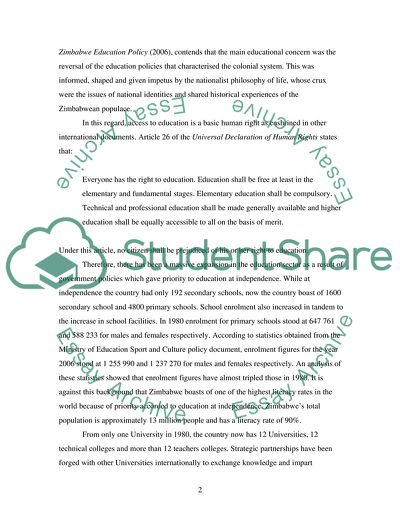Cite this document
(Education System in Africa Case Study Example | Topics and Well Written Essays - 2500 words, n.d.)
Education System in Africa Case Study Example | Topics and Well Written Essays - 2500 words. https://studentshare.org/education/1713450-analyse-the-effectiveness-of-policy-approaches-applied-by-one-or-more-governments-of-the-post-war-era-on-education
Education System in Africa Case Study Example | Topics and Well Written Essays - 2500 words. https://studentshare.org/education/1713450-analyse-the-effectiveness-of-policy-approaches-applied-by-one-or-more-governments-of-the-post-war-era-on-education
(Education System in Africa Case Study Example | Topics and Well Written Essays - 2500 Words)
Education System in Africa Case Study Example | Topics and Well Written Essays - 2500 Words. https://studentshare.org/education/1713450-analyse-the-effectiveness-of-policy-approaches-applied-by-one-or-more-governments-of-the-post-war-era-on-education.
Education System in Africa Case Study Example | Topics and Well Written Essays - 2500 Words. https://studentshare.org/education/1713450-analyse-the-effectiveness-of-policy-approaches-applied-by-one-or-more-governments-of-the-post-war-era-on-education.
“Education System in Africa Case Study Example | Topics and Well Written Essays - 2500 Words”. https://studentshare.org/education/1713450-analyse-the-effectiveness-of-policy-approaches-applied-by-one-or-more-governments-of-the-post-war-era-on-education.


